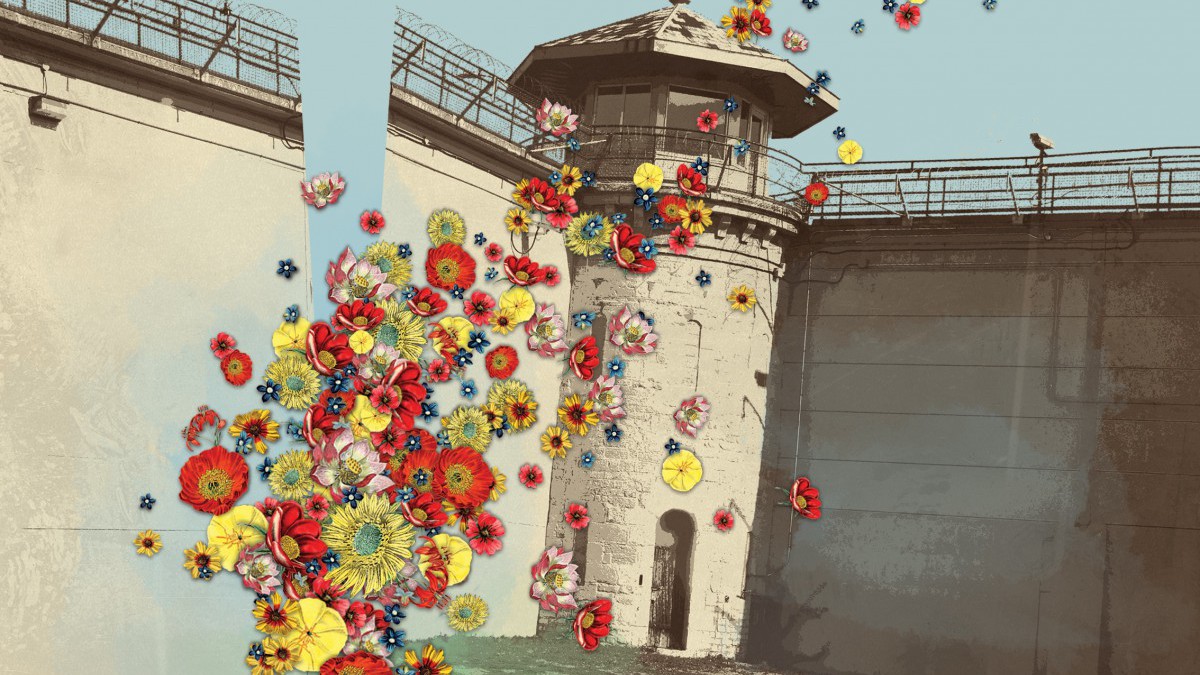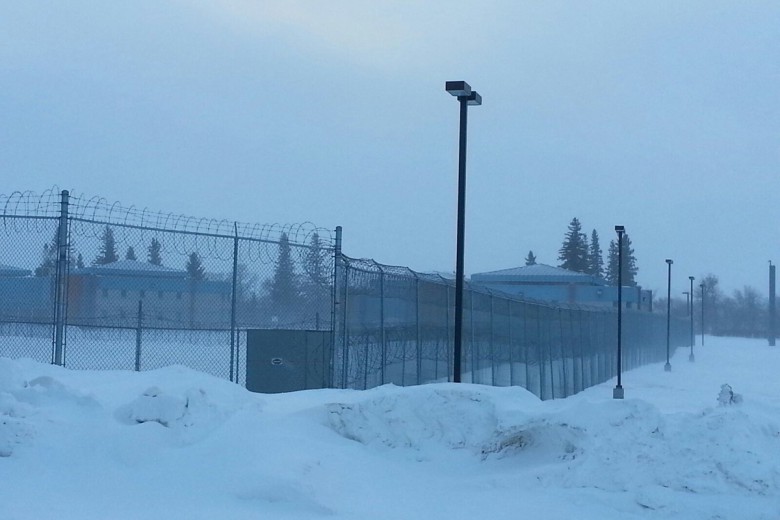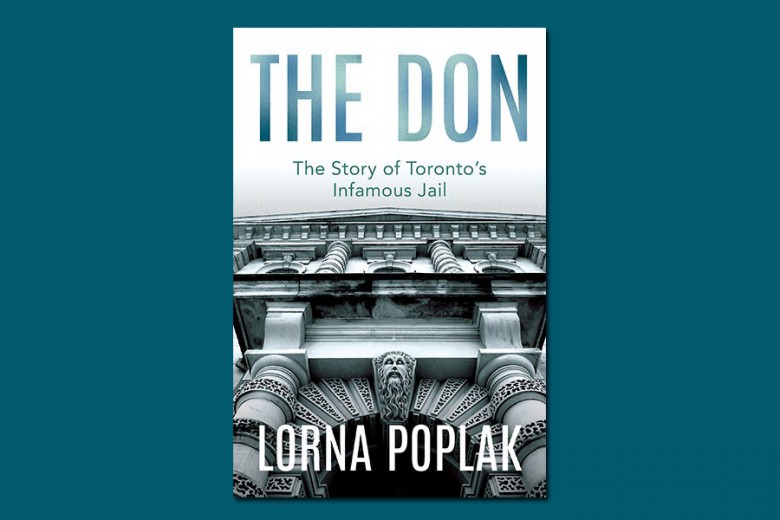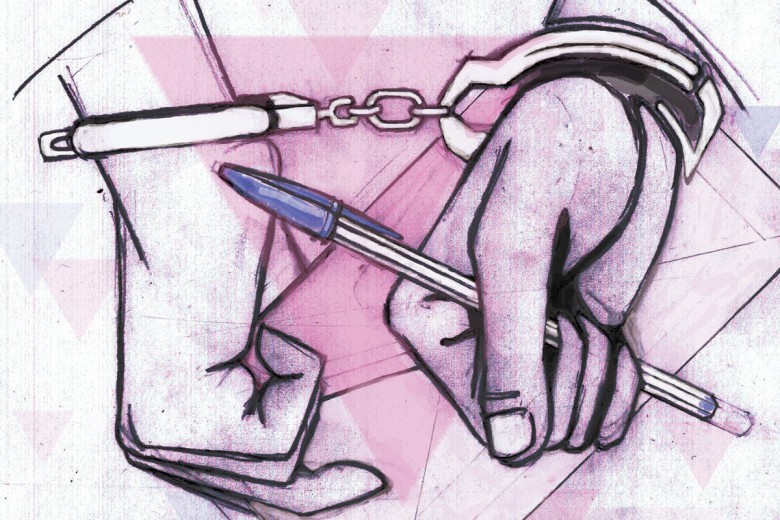Mass incarceration is the norm in Canada. In 2021/2022, nearly 150,000 people were incarcerated in prisons, which is more people than the populations of Fredericton and Moncton combined. And this figure doesn’t account for the tens of thousands more incarcerated in youth detention centres, immigration detention centres, psychiatric facilities, and healing lodges, or those living under strict bail and parole conditions, or those targeted by the police under the ever-present threat of criminalization.
Liberals often push to reform the prison system and to create more “humane” institutions. But reforms like building more prisons to ease overcrowding, increasing the number of people on home arrest, or creating specialized prisons for Indigenous people only further embed the system into our communities. Over a decade of prisoners’ justice organizing has taught me that regardless of what the institution is called or the type of criminalization to which people are subjected, the system dehumanizes and oppresses the most marginalized members of our communities. Instead of looking at ways to reform prisons, we need to render them obsolete.
Drawing from my organizing experience and from interviews with prisoner justice advocates Vanessa* and Christophe Lewis, I’ve compiled information about a few different types of prisons and who is incarcerated in them to help us organize for prisoner justice and abolition.
Provincial and territorial institutions
There are 89 provincially and territorially run institutions – variously called correctional complexes, detention centres, remand facilities, jails, and centres for women – that incarcerate 20,438 people across Canada. Despite the difference in names and management, provincial and territorial institutions have many things in common.
For one, the majority of people incarcerated in them are legally innocent. When a person is refused bail and awaiting sentencing, the courts hold them in provincial and territorial prisons. Vanessa remembers her time awaiting sentencing in Hull, Quebec. “You try to pass the time. After a while you’re too much in your thoughts. You’re at your lowest. You haven’t been sentenced yet … am I still going to have my apartment? Are my kids going to be taken away? Am I going to lose everything? You almost want to smash your head on the wall to stop your thoughts.”
In addition to legally innocent people awaiting a trial, the courts send people sentenced to less than two years to provincial and territorial prisons. The result is a revolving door of people coming in and out, being transferred and released.
When a person is refused bail and awaiting sentencing, the courts hold them in provincial and territorial prisons, meaning the majority of people incarcerated in provincial and territorial institutions are legally innocent.
The high turnover makes connecting with prisoners and creating long-term strategies for change with them difficult. The majority of people are under a tremendous amount of pressure to create a legal defence with little to no access to the outside world. When I was a Jail Accountability and Information Line (JAIL) Hotline coordinator servicing people incarcerated at the Ottawa-Carleton Detention Centre, a provincial institution, many of the callers were asking for help getting through to their lawyers or finding a surety so that they could be released.
Each province and territory has its own body of legislation governing how prisoners are treated and what the conditions of confinement are. But what these institutions have in common is that their conditions are almost always worse than those of federal penitentiaries.
The presumption of prisoners’ innocence acts as a justification for the prison to deprive prisoners of rehabilitative programming, activities, and mental health support. Additionally, in certain provinces, like Ontario, prisoners in provincial institutions are not allowed personal belongings like clothing, radios, or books. Prisoners are also often forced to clean the cells and common areas. Lewis, who was formerly incarcerated, shares that he was jailed in a range with people who were physically unable to clean, meaning the living conditions worsened over time.
Prisoners face risk of retribution for organizing, which can lead to longer sentences. But prisoners awaiting trial are particularly vulnerable. Any new charges or lack of compliance could have profoundly negative impacts on their trial or sentencing.
These institutions also lack adequate health care, which means that many recently incarcerated people are going through drug withdrawal symptoms with no medical attention or support. Lewis explains that in prison, “health care comes to a screeching halt.” He says it’s the norm to wait months for medical attention and that “by the time you see the doctor, the problem is healed.” For Lewis, “healing” meant his injury turned into “basically a permanent scar, a deformity. I have to look at it every day. I have to live with this now.”
Depending on the province or territory, prisoners may or may not have access to a recourse mechanism to file grievances on the conditions of their confinement. If prisoners do obtain access to recourse, they are forced to ask the same guard who abused them to provide the complaints form and the pencil to fill in the form in order to make the complaint. They also have to trust that this guard will deliver the complaint form to their superintendent and that the guard won’t retaliate against them for filing the complaint. As Vanessa explains, “your cell could be torn apart just because a guard finds you have a blank complaints form.”
Moreover, while all prisoners face risk of retribution for organizing, which can lead to longer sentences, prisoners awaiting trial are particularly vulnerable. Any new charges or lack of compliance could have profoundly negative impacts on their trial or sentencing. For example, a legally innocent person awaiting trial who is desperately trying to put together a defence without access to a computer, reliable phone calls, or any physical evidence may be thrown into solitary confinement as retribution for advocating for basic human rights, and they may then miss calls with their lawyer. In my experience, those missed calls could result in missing evidence at trial leading to a guilty finding and imprisonment for decades longer. Vanessa describes her first time speaking out while incarcerated, when she was in communications with the grassroots prison abolition group the Criminalization and Punishment Education Project (CPEP). “When I started to have contact with CPEP, I had the warden pull me out and tell me that she would make sure I serve my full sentence and get transferred far away.” Thankfully, Vanessa was found not guilty of her charges, so the warden wasn’t able to fulfill that promise.
Federal penitentiaries
Across Canada, there are 43 federal institutions, which are all governed by the same legislation (Corrections and Conditional Release Act) and organization (Correctional Service Canada (CSC)). These facilities have varying degrees of security classification. There are five minimum, nine medium, six maximum, and 23 multilevel security facilities. The level of classification that a person is assigned will impact how strict their conditions of confinement are. For example, a minimum-security facility will mean more social interaction and yard time, whereas prisoners incarcerated in maximum-security facilities are more likely to be subjected to social isolation. In my experience as a lawyer and organizer, more programming is available in federal institutions than in provincial ones, but it remains severely underfunded and inadequate.
On an average day in Canada, roughly 12,394 people are incarcerated in federal institutions. People who have been sentenced to more than two years of incarceration are sent to federal institutions. This means that no one in these institutions is awaiting trial or likely to be released in a short period of time. Federally sentenced prisoners have already been through the trial process and are often concerned with finding ways to survive their sentences.
While prisoners in provincial institutions face the risk of being transferred to another institution in the same province, for federal prisoners, the transfers can be to an institution across the country.
Because federally sentenced prisoners are incarcerated for at least two years (and often many more), it is easier to organize for longer-term strategies for change within federal penitentiaries than in provincial and territorial ones. Federal penitentiaries have a grievance-based complaint system that allows for complaints to be heard within a prescribed period of time and which provides some assurance that prisoners will not face retribution for making complaints. While this system is not totally reliable, it does provide better mechanisms for making complaints than in provincial facilities.
Further, similar to prisoners awaiting trial, prisoners in parole board processes are at risk of having their parole revoked, and being given additional charges. As Lewis notes, “I’m a partially free man.” He was released 19 months ago, but explains that he isn’t actually free. “When you’re on parole as a lifer, it’s hard. I live in fear of CSC trumping up charges on me.”
Additionally, while prisoners in provincial institutions face the risk of being transferred to another institution in the same province, for federal prisoners, the transfers can be to an institution across the country. If prisoners are shipped to an institution far from home, it becomes nearly impossible for incarcerated people to see their families and friends.
Institutions for women
Federal and provincial facilities both have institutions specifically for women, and some provincial prisons incarcerate all genders. Many incarcerated women I’ve spoken with prefer women-specific institutions, but the number of incarcerated women is much lower than that of men. The relatively low population means that there are only five federal women’s prisons in Canada, and women are sent to institutions that are very far from their families and communities due to the large distances between them.
While women made up around 13 per cent of all people imprisoned in 2021/2022, this is a significant jump from the 6 per cent that was reported in 2019. The majority of women incarcerated in Canada are mothers, meaning that this growing rate of incarceration is having profoundly negative impacts on families and children.
Immigration detention centres
Roughly 200 people are imprisoned in Canada at all times for violating the Immigration and Refugee Protection Act (IRPA). According to the Canada Border Services Agency (CBSA), 1,432 migrants were detained between July 1 and September 30, 2022 for violating the Immigration and Refugee Protection Act (IRPA). 90 per cent of them are incarcerated for no reason other than the Canadian government deeming them unlikely to appear for a hearing, migrants’ lack of ID, or the CBSA requiring an immigration exam. The remaining 10 per cent are incarcerated because the CBSA deems them criminal or a danger to the public.
There are three immigration detention centres in Canada, but migrants detained under the IRPA are also held in provincial prisons. The IRPA allows the government to hold people indefinitely. Some detainees are incarcerated for years, with no release date in sight. According to Human Rights Watch, the longest CBSA has detained a migrant is over 11 years.
When organizing and working with immigration detainees and prisoners supporting them, CPEP organizers have faced many barriers, including language barriers and a lack of practising immigration detention lawyers to contact.
“I remember there were two women from China and they didn’t speak any English,” recalls Vanessa, who was incarcerated alongside the women in the Ottawa-Carleton Detention Centre. “They [the guards] were screaming at [one of them], but she couldn’t understand. I kept telling them to just use Google Translate but they wouldn’t. They wanted her to change into pyjamas and she didn’t know what they were saying. Instead of helping her understand, they threw her into seg [segregation].”
After witnessing the incident, Vanessa called her sister, who speaks Mandarin, so she could translate for the women. “I don’t know what else she would have done,” Vanessa says. While Vanessa and her sister were able to help after that one incident, she doesn’t know what happened to the women she was detained with and whether they have been released.
The prison keeps growing
Federal penitentiaries, provincial and territorial jails, and immigration detention centres are the most common types of prisons, but there are many other prison-like institutions that confine, constrain, and dehumanize community members. Instead of providing reparations for stolen Indigenous land and ongoing genocide that caused the mass incarceration of Indigenous peoples, the state is funding prisons specifically for Indigenous people called healing lodges. There are 10 healing lodges across Canada, which incarcerated 198 people in 2021/2022.
Admittance to healing lodges is restricted to federally sentenced prisoners who undergo a strict application process, meaning that those awaiting trial or with shorter sentences are not eligible. The management of healing lodges varies by institution, with some being run by CSC and others by community partners. A survey of their use indicates that CSC is approving fewer people and that occupancy rates have declined 30 per cent over the past 10 years.
There are also five federal psychiatric institutions or “regional treatment centres” in Canada and countless provincial and territorial institutions that operate as psychiatric facilities under the mental disorder classifications of the Criminal Code. Ontario has more than 80 facilities listed as those that could operate under the code. The total number of facilities and number of people held within them is not publicly available. Although the majority of people incarcerated in prisons are there due to circumstances related to trauma and mental health, only a small proportion of them are eligible for admittance to a psychiatric facility. This means that most prisoners who are living with serious mental health issues are receiving little to no treatment and instead are being subjected to conditions, like solitary confinement, that exacerbate mental health conditions.
Toward prison abolition
Since being released, Lewis has started the Freedom is a Must Foundation to mentor Black youth who might be targeted by the criminal justice system. Eventually, he says, “we want to be able to mentor all BIPOC people and, frankly, anyone in need. If people need help or mental health support, we want to be there. We want to provide soft and hard skills to help address poverty, provide connections with employment, serve the community through volunteering and fundraising for charities we support, provide prison prevention programs and reintegration support.”
For people who have been incarcerated, both Vanessa and Lewis emphasize the importance of doing what you can when you can and knowing when to take breaks when organizing with incarcerated people.
“It brings back up a lot of stuff … the mistreatment, the shaming, the embarrassment. Talking to people who can’t reach their kids … it’s devastating. No one wants to relive these things,” Vanessa shares. “You go to bed at night with it in your chest. Knowing what the people have to deal with.”
There is no greater good that is served when we strip people of their autonomy, isolate them from their support networks, and prevent them from accessing meaningful work. If the goal is to prevent harm, then prisons, no matter their name, must be abolished.
Even after being released, Vanessa still fears repercussions. “I’m always worried about going to actions. I know if I got arrested, I wouldn’t get bail.”
Lewis offers advice to community members who have never been incarcerated but who want to get involved in prisoner justice organizing: “I just want people to understand that these people are going to come home with a list of issues and if someone wants to sign up to support prisoners, they need to be considerate of that. It’s not for the faint of heart.”
Understanding the conditions of prisons and the criminal justice system is critical to meeting the needs of prisoners. If organizers don’t first understand the circumstances prisoners are in, it can have severe consequences on incarcerated people. For example, in an interview, a prisoner explained to me that a noise demonstration led by well-intentioned activists had caused an entire institution to be locked down for 24 hours. With this example and Lewis’ advice in mind, it’s important for people supporting prisoners to constantly be evaluating whether the actions that they are taking are helping prisoners today and building a more abolitionist tomorrow.
When people ask why I want to abolish prisons instead of making them more humane, my answer is this: there is no humane way to cage a human being. There is no greater good that is served when we strip people of their autonomy, isolate them from their support networks, and prevent them from accessing meaningful work. If the goal is to prevent harm, then prisons, no matter their name, must be abolished.
*Vanessa asked to only use her first name for privacy reasons.



_780_520_90_s_c1_c_c.jpg)



